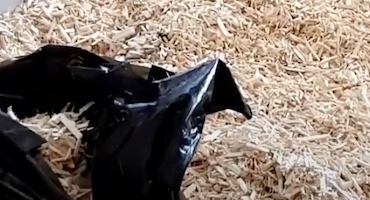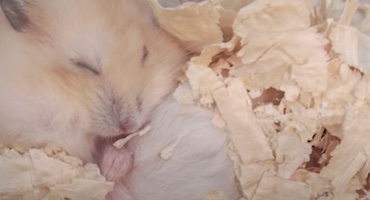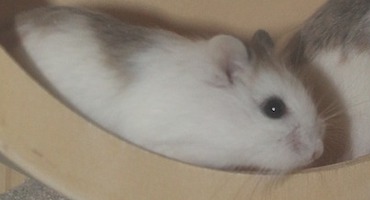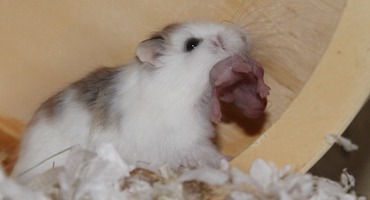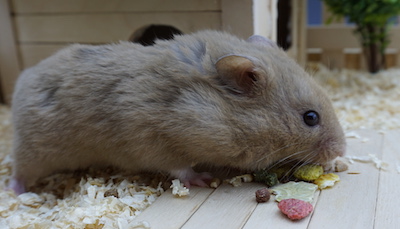
Things to Consider
How many babies can Syrian hamsters have?
Breeding and raising Syrian hamsters is an important responsibility. Taking care of possibly 16 pups will require your time, money, and attention. If not done correctly, there will be a host of issues that will hurt your furry friends. Before considering breeding Syrian hamsters, make an outline of a plan to execute.
What kind of plans should be made?
Making plans ahead of time will make the breeding process smoother. Before your Syrian hamsters’ pups are born, decide where they will go. Keeping all the babies is an option, but that’s a lot of mouths to feed! Selling them is another option. People who want Syrian hamsters will seek out the best breeders to find their next critter. Putting the Syrian hamsters up for adoption is also another good option.
Preparing to Breed your Syrian hamster
Where should I get the Syrian hamsters?
The Syrian hamsters need to come from a reliable, experienced breeder. The breeder will be able to provide lots of information. This includes genetics, family trees, and bloodlines. Getting a Syrian hamster from a safe source will eliminate possible genetic issues. You will also have a good idea of what the Syrian hamster’s pups will look like.
Never get Syrians Syrian hamster that will be used to breeding from a chain pet store. These Syrian hamsters are not documented, and their genetics are not controlled. When you purchase Syrian hamsters from a pet store, you have no idea how old they are, or what their parents look like.
Your male and female Syrian hamster need to be the same age. A minimum of four to six months old is the best to start breeding. Older hamsters that breed will produce fewer babies and the pups will have various genetic problems.
What supplies will be needed?
Provide the Syrian hamsters with a comfortable environment. This means purchasing or making a sizeable Syrian hamster enclosure that will house multiple Syrian hamsters at once. Planning the space is essential. All the Syrian hamsters (including the pups once they are older) need to have their own separate cage.
Keep the Syrian hamsters in their separate cages, unless you are actively trying to breed them. When you first get the Syrian hamsters, keep the pens in the same room, but not close together. Each one should contain a water bottle with fresh water inside, hide houses, food bowls, wheels, toys, and bedding.
You will also need to prepare to have a back up in case your female Syrian hamster rejects her pups. Have a small eye droplet and kitten milk replacement handy. Cat milk is the closest to hamster milk, and the animals will thrive if this needs to be given.
How should the male and female Syrian hamsters be introduced?
Place their cages in the same room as each other. This will familiarize the hamsters to their different smells. Let them be for about a week. The introduction process is best to take slow. Letting the male and female Syrian hamsters take their time will make the breeding process easier. If introduced too early, the hamsters will fight and cause serious injuries.
After about a week, take a clump of bedding from each of the hamsters’ cages and put them in the opposite enclosure. This will further naturalize the hamsters with each other’s smells. Push their cages directly next to each other. Now the Syrian hamsters will be able to see each other.
Prepare a neutral territory. This will be where the breeding will happen. A neutral cage will have less stress on male and female hamsters. No smells are established, so no chance of threats. The enclosure should have bedding, water, and a hide house.
Breeding your Syrian hamsters.
How will the female Syrian hamster show she is in heat?
Before putting your male and female hamsters in the neutral cage, you must determine if the female is in heat. She will show this by standing very still. Then the female hamster will lift her tail into the air. When you go to hold her, gently touch the top of her rear.
If the female hamster is in heat, she will make the motions mentioned. Do not put the male and female hamster together when the female is not in heat. This will induce hostility and fighting between the hamsters.
How will the Syrian hamsters begin breeding?
Place your male and female hamster in the neutral enclosure. The female will pause and lift her tale. The male hamster will mount her and start the process. You must stay and observe in case any fights break out.
How long does it take for a Syrian hamster to mate?
The breeding will take around 15 to 20 minutes. Once they walk away from each other, remove the hamsters and put them back in their separate cages. Be sure to record the date and time of the breeding. Knowing the date will help determine when the female hamster will give birth.
Prepping for the Birth
Observe the female Syrian hamster for one week. Changes in her temperament will start to occur. The gestation period for hamsters is about 15 to 18 days. Using the date recorded, you will be able to determine when the birth of the Syrian hamster pups will be.
Clean out your female hamster’s cage. You will need a cleaning solution, paper towels, a brush with a pan, and a garbage bag to put the dirty bedding in. Using rubber gloves will protect you from the bacteria that is on your hamster’s feces.
Using the brush, sweep the soiled bedding into the pan. Do this until all the bedding is gone from the cage. Scrap off any filth that has gathered on the sides of the habitat. To get smaller particles, use a vacuum hose to get into tighter corners.
You will need to spray down the cage with your choice of safe cleaning solution next. Coat the bottom, sides, and any other fixtures in the cage with the spray. Take a clean paper towel and wipe down the enclosure until it is dry.
Gather your Syrian hamster’s belongings and put in a sink to be washed. Scrub on the objects with warm soapy water. Pay attention to the critters wheel; the wheel will have bedding and feces stuck to the surface. Once the washing is complete, rinse off the accessories. Do not leave any soap left. Dry off the items with a towel and set aside to let air dry.
Add the bedding of your choice to your hamster’s freshly cleaning cage. The bedding should be at least four inches in height. The height gives your furry friend the option to burrow and make tunnels. Spread the litter evenly throughout the enclosure.
Be sure to add all the essentials: fresh water, food, toys, and a hide house. Add additional bedding material. These include ripped up paper towels or toilet paper, strips of a fleece blanket, and an extra handful of your hamster’s regular bedding.
When will a female Syrian hamster show signs of pregnancy?
Female Syrian hamsters will begin to show signs of pregnancy about two days before the birth. Never handle your hamster when it is near the due date. This will cause your female hamster extra stress. The act of holding your hamster will hurt the delicate pups.
Your female hamster will start to assemble her nest. She will gather nesting material and other objects she finds in her enclosure. Do not disturb her while she works.
Your hamster will most likely give birth at night. Never touch or try to handle her or any of the pups. If you hold a newborn pup, your natural smell will get on the baby. This will cause the momma hamster not to remember her pup. She will reject it and possibly eat it.
Do Syrian Hamsters eat their young?
This is always a possibility when hamsters give birth. The mother hamster’s instinct will kick in and will determine if she will eat a pup. If the size of the litter is too big, the hamster will eat pups to eliminate any competition for food. The female hamster will consider this for the good of the rest of the pups.
We’ve put a bunch of information together here about hamsters eating their young here.
Taking Care of the Litter
The mother will protect her babies and keep them in her nest. The pups will look pink and hairless. They are born with their eyes closed.
You do not want to stress the momma hamster, but you still need to be sure she has everything she needs. For the first week and a half to two weeks, quietly refill the mom’s food bowl and water bottle.
You do not need to provide the babies with anything currently. They will get everything they need from nursing. You might see them squirming around in their nest.
When should the hamster pups be introduced to solid food?
You should introduce solid food to the Syrian baby hamsters around one week after birth. Give tiny portions of light vegetables. Chop up broccoli into small pieces, or maybe give the pups a strip of a grated carrot. The mother hamster will also store food that she finds in the cage in her nest.
Be sure to check for healthy development after about a week. The small pups will start to show signs of fur. Their different colors will also begin to appear. Adventurous babies may wander out of the nest to explore, but the mother hamster will gently pick up the pup in her mouth and bring it back to the nest.
When should the next cage cleaning be?
You should clean the cage two weeks after birth. Move the hamsters one by one into a safe and clean area where they cannot escape. When cleaning, be gentle, and only use water. Be sure to try and keep the nest intact. If its wet and soiled, then replace the bedding and nesting material.
Spot cleaning will eliminate waste and help reduce the number of washings that will disturb the mother and babies. To get the pups familiar with your smells, take a clump of bedding and rub it around between your hands. This will leave your natural odor on the bedding, which the newborns will smell.
At the two-week mark, your hamster will now be able to move around on their own, eat, and drink by themselves.
Check the pups’ genders at around three and a half to four weeks. This can be a time-consuming process. Look at the distance between each hamster’s anus and genital opening. The range of a male will be longer than the length of a female. By four weeks, the males’ testicles should also be noticeable, as should the nipples on the females’ bellies.
At what age should Syrian hamsters be separated?
Once you determine their gender, you can now separate the pups by gender. Have two enclosures ready to go and place the males in one and the females in the other. You can pick up the baby hamsters by their scruff; which is on the back of the neck. They have loose skin on their neck, so the mother hamster can pick the babies up and not hurt them.
Not all Syrian hamsters grow at the same rate. Double check their gender to be sure they are put in the right cage. If you are not sure, take all the pups to a vet. They will be able to confirm the hamster’s genders.
Can you keep two Syrian hamsters together?
Syrian hamsters are naturally solitary creatures. This means they prefer to be alone and have their own space. You can NOT keep two Syrian hamsters together. Your hamsters will fight for territory. If left together, the hamsters will hurt each other, and possibly try to kill one another.
When should the Syrian hamster pups be socialized?
The babies will be ready to meet you at around 30 days after birth officially. You can now begin to socialize with the pups and the mother. Let the babies come to you, do not try to pick them up to be safe. Offer them small bits of fruits and vegetables from your hand.
At 35 days, your Syrian hamster will be able to be adopted out or sold to other people. Provide all the information on when they were conceived, when they were born, and what kind of food you have been providing your critters.
Conclusion
Breeding Syrian hamsters is an excellent and rewarding experience. Having happy and healthy pups is always the end goal. Plan ahead during the breeding process and do not leave your adult hamsters together in one enclosure. Letting the mother hamster do what she needs to do will make the process go fine.
Share
Related Posts
Hamsters are recognised for being cute and cuddly critters that make terrific pets. However, there are also occasions [...]
Dwarf hamsters are the smallest of the hamster breeds. Their cuteness and size make them a trendy pet. [...]

